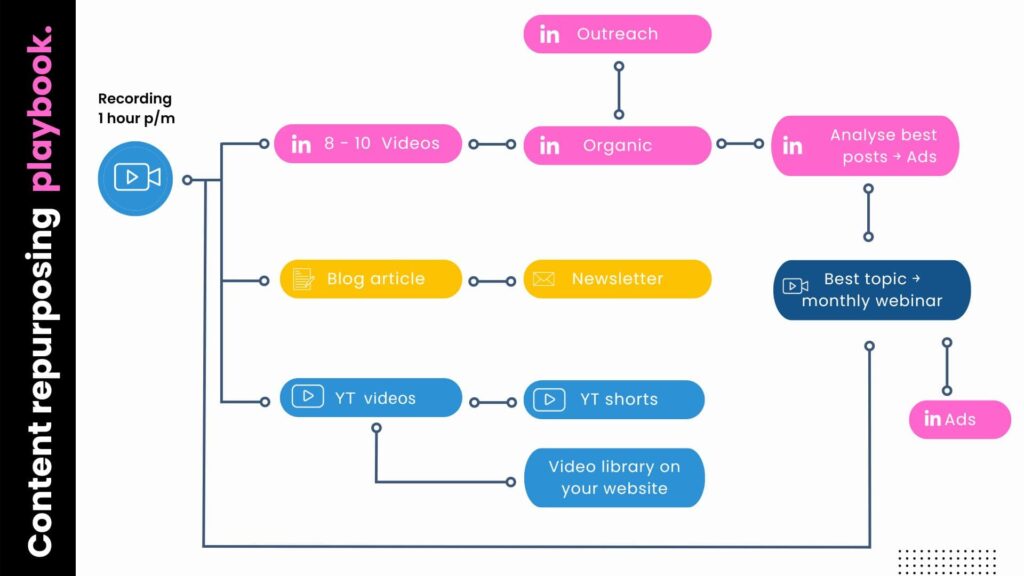B2B content, or business-to-business content, refers to the information that is created and distributed to reach other businesses. It is a strategy used to share valuable and relevant content with potential customers in the business world.
B2B content can take different forms, such as blog posts, white papers, case studies, videos, and more.
The main purpose of B2B content is to inform and convince other businesses to collaborate or use the products or services being offered. It goes beyond simply promoting a product; it’s about building trust, providing valuable knowledge, and demonstrating expertise within a particular industry.
What is content repurposing?
Content repurposing (also called content reuse) refers to the process of modifying existing content and reusing it in different formats or channels. Instead of starting from scratch when creating new content, content repurposing uses already existing high-quality content and adapts it to reach new goals and audiences.
This process helps companies make their marketing efforts more efficient by making the best use of existing resources. It can increase message distribution, increase visibility, and appeal to a wider audience without investing much extra time and effort.
Benefits of B2B content repurposing
There are several benefits of B2B content repurposing:
Time and cost savings
By reusing existing content, you can save time that would otherwise be spent creating new content. This also reduces the costs associated with producing entirely new content.
Improved SEO
Content reuse allows you to optimize existing content for search engines. By providing valuable information in different formats, you increase the chances of potential customers finding your business through searches.
Increased reach
By adapting content to different channels and formats, you can reach a wider audience. Not everyone consumes information the same way, so by offering multiple options, you increase the likelihood that your message will be heard.
Better engagement
Repurposed content allows you to take feedback and analysis from previous publications and apply it to new versions. This allows you to improve the content and generate better engagement with your target audience.
How to reuse B2B content?
As a founder of a SaaS company, there are several ways you can repurpose B2B content:
Turn videos into content for your blog, social media, newsletter and YouTube
If you record a 1-hour video in the form of an interview, you can use this content for a lot of different channels. You can use it to create multiple blog articles, newsletters, YouTube videos and shorts as well as LinkedIn content. We also use this process for all our clients in authority marketing with subject matter experts.
Below you can see a flow chart of the exact process we use for content repurposing:

Also read: How Short-Form Video Content Strengthens Your B2B SaaS Marketing
Turn blog posts into videos
Take existing blog articles and transform them into videos. This can help present your message in a visually appealing way and can reach a larger audience that prefers watching video to reading text.
Transform white papers into presentations
Use the content of white papers to create informative presentations that can be shared on webinars, conferences or through other online platforms. This helps spread knowledge and increase your brand’s visibility.
Use case studies for testimonials
Use existing case studies as the basis for customer testimonials. You can quote parts from case studies or ask customers to share their experience directly in the form of testimonials. This strengthens your company’s credibility.
Social media content recycling
Leverage successful social media posts by sharing them again or adapting them for new paid campaigns. This helps increase engagement on social media and can attract new followers.
Also read: podcast repurposing with our B2B podcast agency.
In Conclusion
It is important to remember that when reusing content, adapt the content to the specific audience and channel on which it is shared. Adjust the message to be relevant to the new context and make sure your content is still valuable and informative.
Repurposing B2B content allows you to optimize your marketing efforts and get more results with less effort. It allows you to be more efficient while reaching a larger audience.
